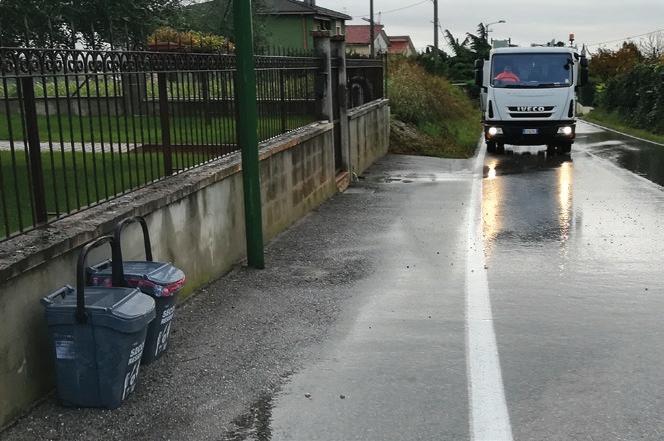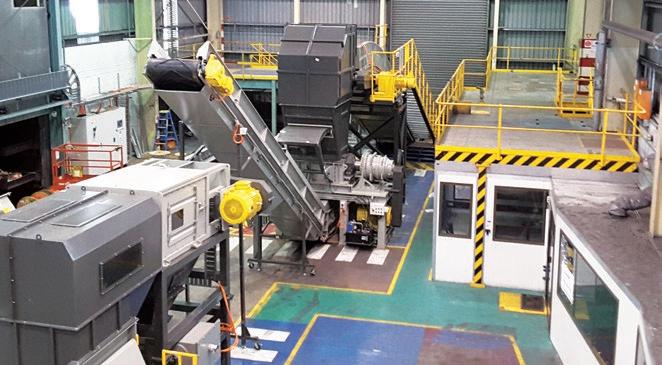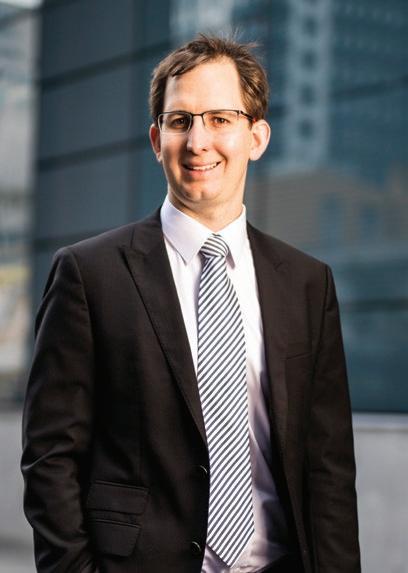
15 minute read
CANS COORDINATION
WASTE MANAGEMENT REVIEW EXPLORES THE BARRIERS TO INTRODUCING A WELL-RUN CONTAINER DEPOSIT SCHEME IN WA.
When implemented effectively, the benefits of a container deposit scheme (CDS) are a no brainer.
By reducing litter, creating a clean stream for glass manufacturing and a host of other benefits, it’s easy to see why CDSs are being now being introduced in almost all states and territories.
South Australia was the first state in 1977 to introduce a CDS. More than 40 years on, beverage containers make up a mere 2.8 per cent of litter, with a 77 per cent return rate.
NT followed suit decades later in 2012, while NSW implemented a scheme at the end of 2017, QLD in 2018 and now WA in 2019. Victoria and Tasmania have yet to establish their own schemes, with pressure on Victoria from a number of groups such as the Boomerang Alliance to do so.
But with any successful implementation, the devil is in the detail and all eyes are on WA to ensure its adequately planned for and governments heed the lessons of previous schemes.
In May, the WA Government chose a coordinator for the state’s CDS. Environment Minister Stephen Dawson announced WA Return Recycle Renew Limited had been selected to operate the scheme which starts in early 2020.
WA Return Recycle Renew is a newly incorporated not-for-profit established by Coca-Cola Amatil and Lion.
Local government has long supported the implementation of a CDS to reduce litter and increase resource recovery. The WA Local Government Association (WALGA) has been working with local governments on ways in which they can engage with the CDS, including running refund points or donation points and facilitating business and local community engagement.
Following the implementation of schemes in NSW and QLD, WALGA has been focused on ensuring clear and public objectives and timebound targets for the scheme. It also hopes to address planning considerations prior to commencement, revenue sharing agreements and understanding how the community is likely to engage in the scheme.
Network standards identify that the minimum number of refund points in WA will be 229, comprising 114 fulltime and 115 flexible refund points at the first year of operation. According to WALGA, this delivers one refund point for approximately every 10,000 people in WA.
In WA, there will be a mixture of refund options in different locations. WALGA would prefer to see an increased number of refund points in the non-metropolitan area. Its submission on access to the scheme suggests additional refund points in regional centres and at least another 26 locations in the non-metropolitan area.
WALGA will continue to advocate for increasing the operating hours for full-time and flexible refund points in the metropolitan and non-metropolitan area. The minimum network standard states that full-time refund points must be open for at least 35 hours per week, with at least four of those weekend hours.
Cr Lynne Craigie, WALGA President, says that local government would like to see an increase in the minimum number of opening hours across the board.
“We want to give this scheme the greatest chance to succeed for the community, and gather the most containers possible, and appropriate opening hours for refund points will go a long way towards that goal,” Lynne says.
Lynne says the model of revenue sharing for funds collected through the scheme has not yet been determined. According to WALGA, until the audit sampling protocol requirements are known, it may be difficult to
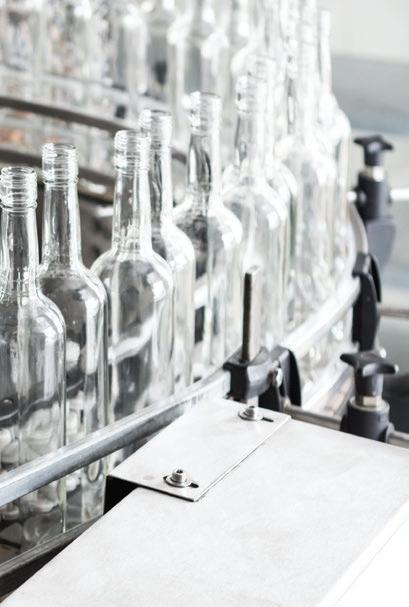
WALGA has recommended a revenue sharing model of 50/50 split between councils and MRFs.
determine if materials recovery facilities (MRFs) need to upgrade/modify their infrastructure.
To ensure kerbside revenue is not interfered with, WALGA is working with local governments and MRF operators to develop a sharing model. The beverage containers represent a relatively small but high value component of the material collected in the kerbside system.
WALGA is working with local governments and MRF operators in WA and has recommended a revenue sharing model of 50/50 split, net of verifiable costs associated with the scheme.
MRF operators will need to provide sufficient evidence to local government on costs which include reducing tonnages delivered to the MRF by individual local governments and eligible container commodity sales compared to the previous year. It also comprises administrative costs associated with the scheme such as reporting to the scheme coordinator.
According to WALGA, audit costs will also need to be provided evidence and it is not clear whether the scheme will cover these costs, though they are likely to be one of the most significant costs directly attributed to the scheme.
CDS-related costs are another matter, such as if the MRF has to install specific infrastructure, including facilitating the audits required.
WALGA has consistently advocated that the scheme should cover the costs of audits of MRFs to determine eligible containers, as opposed to MRFs covering the cost.
“We’re also recommending reporting data from the MRFs to demonstrate administrative and audit costs, as well as changes to kerbside collections and container commodity sales,” Lynne says.
Lynne says that transparency across this process will form an important part of ensuring the scheme’s success, and WALGA is recommending a third party auditor be appointed to provide oversight, with audit costs to be covered by the scheme.
Two MRF refund processing models have been discussed. These are direct counting, where each MRF operator must count the number of individual eligible containers of each relevant output material type, and sampling to generate data on eligible containers.
According to WALGA, the direct count approach is appropriate for small MRFs where direct separation and counting of eligible containers is possible. The MRF sampling protocol is appropriate for larger MRFs (such as those in the metropolitan area/ regional centres) where a direct count is not possible, due to tonnage of material processed and existing infrastructure set up.
Rose Read, National Waste and Recycling Industry Council (NWRIC) CEO, says that to ensure the CDS is a success in WA, it will be important that there is clear information for the community on what is accepted and how the scheme works. Likewise, what containers are acceptable and readily accessible collection points across the country will also be an important consideration.
“This will be especially challenging in WA given the vast size of the state, including servicing remote and regional communities,” Rose says.
Rose says that the NWRIC members have learnt from NSW and QLD that clear protocols for materials recovery facilities are essential.
“These protocols should be developed in consultation with recyclers, the scheme coordinator, state and local government,” Rose says.
She says that they need to include payment procedures for the container deposit and handling/processing fees and auditing procedures that are fair and affordable to implement.
To ensure the CDS is a success, it will be important that there is clear information on what can and can’t be accepted.
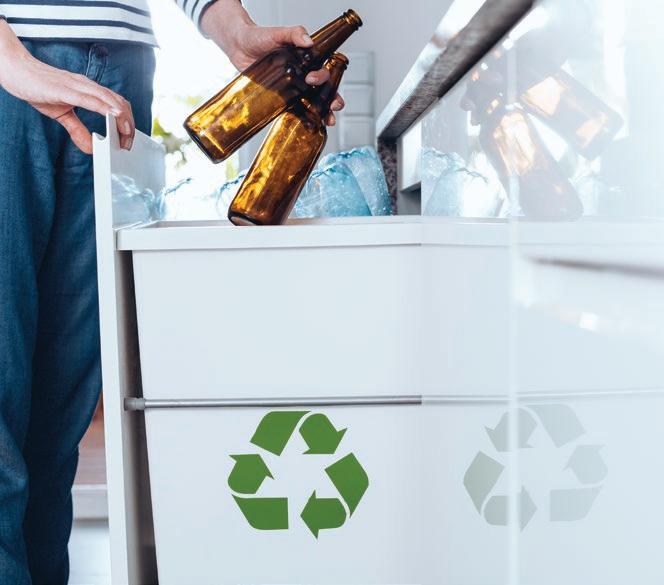
In addition, the ability to transfer containers from one MRF to another MRF for processing, reasonable requirements to show proof of recycling and that ownership of the containers remains with the MRF should also be included.
“Refund sharing between MRFs and councils should be agreed at the start of the scheme, and should be consistent across all councils. This was not agreed in NSW, causing unnecessary angst. It was an inefficient use of everyone’s time,” Rose says.
Rose says that when the NSW CDS started, MRFs lost valuable commodities to this new collection network.
“To allow a smooth implementation, the protocol for MRFs must be done fairly, cost sharing agreed upfront, and ownership of the containers should remain with the MRF. Where appropriate, we encourage scheme and government assistance in upgrading infrastructure,” she says.
She says that one of the downsides with having state-based CDSs is the inconsistencies that arise between the schemes. Rose says that these inconsistencies include administrative and reporting requirements which reduced the industry’s ability to realise operational efficiencies and pass on savings to the scheme coordinators.
“The NWRIC encourages all states and territories to work together to remove these unnecessary inconsistencies. This includes the scope of containers covered under the scheme,” Rose says.
“A single national scheme where all stakeholders work collaboratively to deliver the scheme’s objectives is the NWRIC’s preference long term.”
Rose says that the NWRIC is also calling for Victoria and Tasmania to implement container deposit schemes as a matter of urgency, clean up recycling streams and make producers responsible for their products.
“Only two states have not yet implemented a scheme. This would remove the issue of interstate movement of containers as well.”
A spokesperson for DWER in June said that the Minimum Network Standards establish the criteria for refund point locations and hours of operation. The standards require 95 full time and 36 flexible refund points across the Perth and Peel regions. In regional WA there will be at least 19 full time refund points and 115 flexible refund points.
The spokesperson said that DWER will not facilitate revenue agreements between local governments and material recovery facilities – this is a commercial arrangement but it’s expected they would share the revenue.
“It is likely that regulations will provide a default position for revenue sharing if agreement cannot be reached,” the spokesperson said.
The spokesperson said the allocation of costs for audits to determine eligible containers for MRFs had not been finalised.
The spokesperson said that WA’s Container Deposit Scheme will be the best in Australia as it’s been designed with consideration given to evaluations of other Australian schemes.
Key design features of the WA scheme include putting return rate targets into regulations to ensure scheme objectives are met, with 85 per cent of eligible containers to be returned for recycling from 1 July 2022. Support will also be provided for payment in arrears by beverage suppliers of costs for returned containers to minimise impacts on industry. In addition, transparency will be ensured by requiring public reporting of scheme performance.
The spokesperson also said that it will set objectives in legislation that the scheme must provide opportunities for social enterprise and benefits for community organisations, stating that WA is the only jurisdiction to set this objective in law.
Letus design a shredding system to meetyour specific needs. Solving problems and creating opportunitiesprocessing a wide range of materials is what we do best. Everythingfrome-waste, metals,tyres, confidential documents, medical waste, plastics, wood and packaged products can be destroyed, sizereduced and separated.

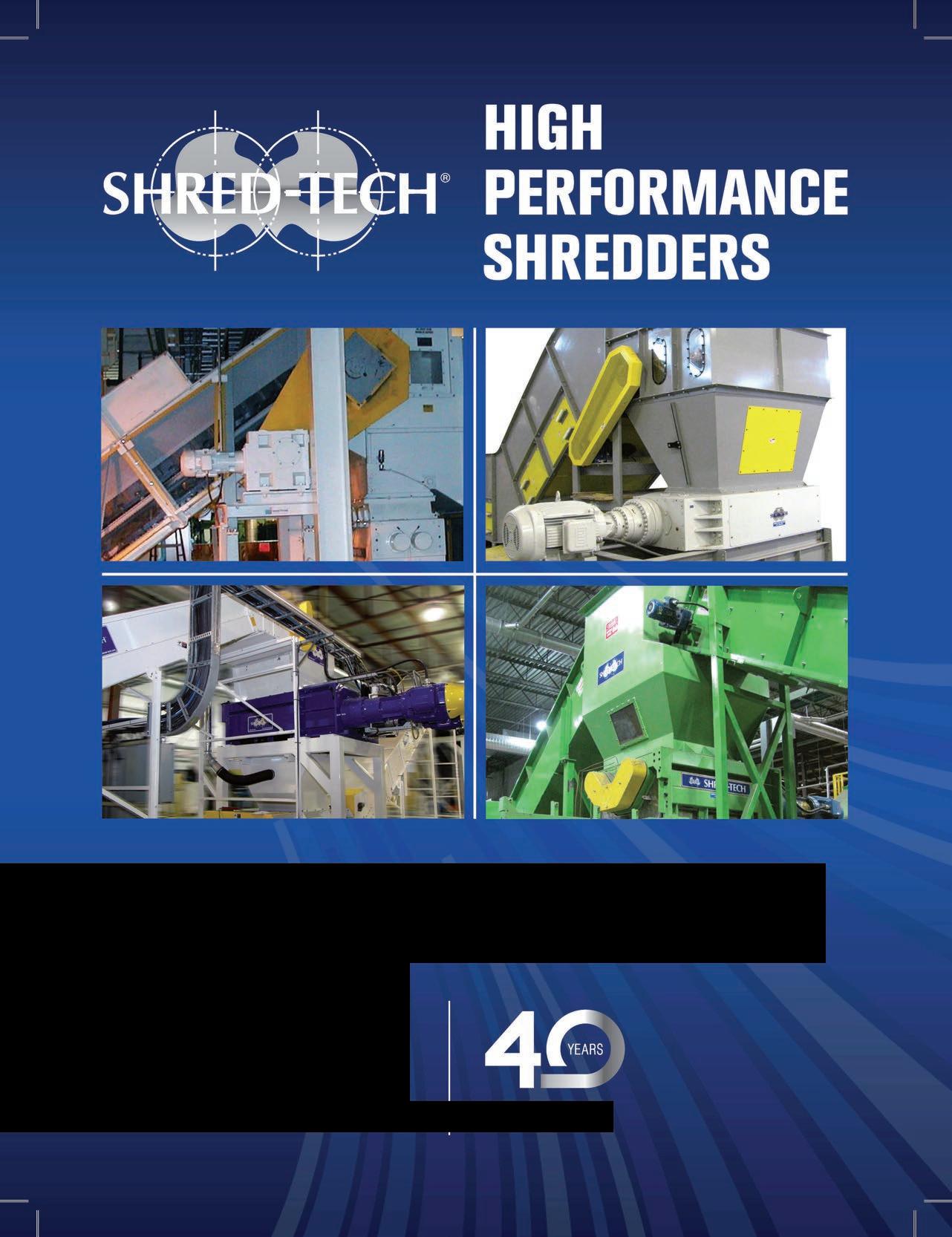
tll®�@ a www.shred-tech.com Contact us today at 1.800.730.684
DO GOOD FOR TOMORROW. RECYCLE YOUR OLD MOBILE TODAY.


We have been partnering with government, local councils, retailers, schools and workplaces for over 20 years across Australia to make mobile phone recycling accessible and easy.
Find out more by visiting mobilemuster.com.au
Servicing south Adelaide
SOUTHERN REGION WASTE RESOURCE AUTHORITY CHAIRMAN MARK BOOTH TALKS TO WASTE MANAGEMENT REVIEW ABOUT THE ORGANISATION’S
To effectively manage estimated increases to the state’s volume of waste generation, the South Australian Waste and Resource Recovery Infrastructure Plan argues the need for a $94 million investment into resource recovery infrastructure across the city of Adelaide.
The report specifically lists south Adelaide as the most suitable location for future waste and resource recovery infrastructure.
Additionally, it suggests a new or expanded 50,000-tonne MRF is needed to service the region.
“There is an opportunity to invest in modern technology that reduces processing residuals and increases the range of materials processes, for example soft plastics, hard plastics and expanded polystyrene packaging,” the plan reads.
Taking cues from the infrastructure plan, the Southern Region Waste Resource Authority (SRWRA) has developed a business case for a $21 million material recycling facility (MRF) in the region.
SRWRA is a regional subsidiary established by the cities of Onkaparinga, Marion and Holdfast Bay, pursuant to Section 43 of the 1999 Local Government Act.
SRWRA Chairman Mark Booth says the organisation is responsible for providing and operating waste management services on behalf of all constituent councils.
“SRWRA is one of the state’s key landfill operators, currently receiving over 100,000 tonnes of waste annually,” Mark says.
According to Mark, SRWRA has been examining the feasibility of establishing a MRF in south Adelaide since 2016, as no integrated MRF landfill facilities currently exist in the region.
“SRWRA constituent councils, like most councils, have been adversely financially impacted by changes in the recycling market, due largely to National Sword,” Mark says.
The proposed facility will be located within SRWRA’s existing landfill site at Seaford Heights and capable of servicing all councils in south Adelaide.
“If commissioned, we will be able to utilise recycled materials in our own backyard, create up to 37 full time equivalent jobs at the new plant, process approximately 60,000 tonnes of product per annum and attract complementary businesses to our region,” Mark says.
Holdfast Bay Advisor Michelle Logie says building an MRF allows new technology to be introduced, which will produce higher quality product streams.
“Keeping the recycling stream as clean as possible with low contamination levels is important to ensuring high quality outputs for
SRWA is calling on the Federal Government to support the policy.
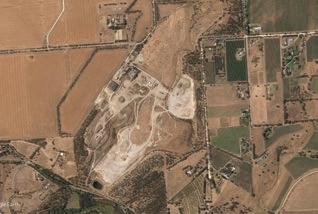
downstream markets,” Michelle says.
“Commingled dry recyclables are currently transported to MRF’s operating at Wingfield or Salisbury and so redirecting these collection to a southern based facility also reduces transport costs and greenhouse gas emissions.”
As a representative for SRWRA, Mark is calling on the Federal Government to support the facility.
“I’ve written to the candidates of Boothby, Kingston and Mayo to help secure funding, including a $5 million contribution towards the construction of the $21 million plant and $5 million for an economic development fund to support the co-location of compatible circular economy industries to the SRWRA site,” Mark says.
Mark says the key challenge to establishing an MRF is managing problematic waste streams such as soft plastic and securing end markets. He says however that SRWRA are fully aware of those challenges and able to address them if funding is secured.
Tackling pollution
THE QUEENSLAND GOVERNMENT HAS INTRODUCED A PLASTIC POLLUTION PLAN TO IDENTIFY HOW GOVERNMENT, BUSINESS AND THE COMMUNITY CAN COLLABORATE TO REDUCE POLLUTION’S IMPACT.
As part of Queensland’s broader waste strategy, the Department of Environment and Science (DES) developed a Plastic Pollution Reduction Plan to identify how government, business and the community can work together to reduce pollution’s economic, social and environmental impacts.
The plan will identify actions to influence responsible consumption and disposal behaviours, encourage redesign and innovation and stimulate and develop markets.
It complements other initiatives such as a ban on single-use, lightweight plastic shopping bans and the Container Refund Scheme.
A DES spokesperson tells Waste Management Review that the plan will inform future decision-making by identifying priority actions, including new opportunities for recycling and plastic manufacturing in Queensland. Currently, only about eight per cent of plastic is recycled in the state.
“Increasing the value of waste plastic, along with smarter consumption and generation of plastics, will help reduce the amount that ends up in the environment,” the spokesperson says.
The spokesperson says that bans on particular products will always be part of the mix while those products are in widespread use.
The Plastic Pollution Reduction Plan aims to reduce the impact of plastic on the environment, transition plastic waste towards a circular economy and deliver economic opportunities associated with plastics.
In collaboration with a number of groups, including business, agriculture, environment, local government and the plastics industry, the plan will be split into five key sources of pollution. The five are at home, away from home, commercial and industrial, marine and waterways and agriculture.
Breaking this up into five sources encourages people to think about how we use plastic in all aspects of society, including at home, at work and in various industries.
At home allows households to choose to buy products with reduced or reusable packaging. Away from home covers that of food and beverages from cafes, fast food outlets or convenience stores.
The spokesperson says that the away from home inclusion was important as plastic is generated in all aspects of daily life, including homes, offices, workplaces, schools and hospitals.
Commercial and industrial comprises opportunities to recover clean bulk plastic and influence industrial practices in the manufacture and design of products. Agriculture covers the use and disposal of plastics on farms, including pollution, particularly from the build-up of macro and microplastics.
Finally, marine and waterways plans to raise awareness about the impact plastic is having on marine life.
Actions in the Plastic Pollution Plan will include examining policy, legislation and industry practices, collaborating with industry, providing information and educating the community and the plastics industry. Likewise, it will also look at support advancement of research and scientific evidence, supporting infrastructure development and developing markets.
The DES spokesperson says that as industry is constantly evolving and innovating, changes in product design usually focus on product differentiation. However, consumers are now more aware and expect sustainable products – motivating industries to adapt their products and delivery models.
As such, the plan will identify and encourage design improvements that lead to increased recovery of materials and developing new markets for recycled materials.
“The policy certainty delivered through the plan will allow the industry to better understand the direction set by the Queensland Government as well as ensuring industry has sufficient time to adapt,” the DES spokesperson says.
The DES spokesperson says that to stimulate and develop sustainable markets, manufacturers need to be sure of ongoing supply.
The plan breaks up plastic pollution into various polymers as an array of polymers, additives and processes are used in the manufacture of specialised products. As such, different collection and reprocessing solutions have to be used for different plastics.
It may also provide to be an adjunct for existing programs such as Plastic Free Noose – a pilot program funded by the QLD Government

WE OPERATE NSW WIDE
REAR LOAD COMPACTORS



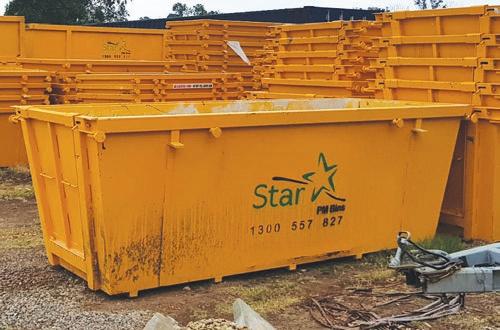
admin@starpm.com.au | 1300 557 827 PO BOX 63, West Hoxton NSW 2171 www.starpm.com.au
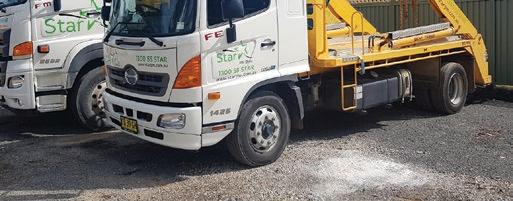
Star Property Maintenance stock 2,3,4,6,8,9 and 12 cubic metre marrels.


